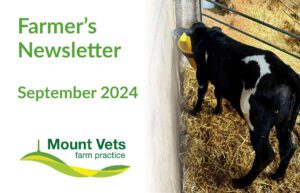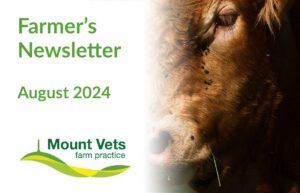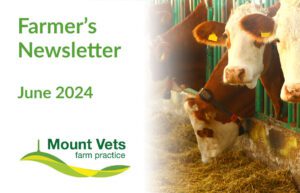March 2023
Here is the latest from our farm team at Mount Vets. If you would like any further advice or would like us to cover something in the next newsletter, please call us on 01823 662286 or contact us here.
We want to hear your feedback… Leave us a review!
Our new website is now live. We hope you enjoy an easier navigation through the pages and have had the opportunity to look at the new information that we have added. We value your feedback and comments and would appreciate if you could take the time to leave us a review! Please follow the link to share your thoughts. https://g.page/r/CTSyP_UXvSPIEAI/reviewTop Suckler KPIs to Start Tracking This Year (Part One)
With changes to agricultural payments and increased competition from outside the UK on the near horizon, it is more important than ever to be able to track the profitability and efficiency of your suckler systems. The average suckler producer is losing £135 per cow a year before subsidy – meaning that no one can afford to be “average” for much longer.
AVERAGE COST OF PRODUCTION (COP)
The AHDB KPI Express Tool can help you to calculate your COP per calf. Having an accurate idea of your COP per calf can help you to make more informed business and marketing decisions, as well as benchmark yourself against similar enterprises.
COP can be improved through many different avenues depending on where you are overspending or underperforming. Increasing herd fertility, calf survivability and growth rates help to increase output. Reducing expensive feed costs (i.e. moving away from a reliance on creep feeding in favour of well managed grazing) and avoidable medicines costs through better management and vaccination can help to reduce costs.
AGE AT FIRST CALVING
Some profitability studies have shown that the single biggest action you can take to improve the profitability of your suckler herd is to start calving down heifers at 22-26 months old. Despite this, only 35% of UK suckler herds are doing this, with the average age of first calving 32.8 months old.
This is not as simple as just throwing the bull in at 15 months old – ensuring heifers are adequately grown and not at an unnecessarily increased risk of a difficult first calving takes careful planning. Heifers must be at least 65% of their expected mature cow weight at bulling (i.e. 425kg heifer for a 650kg expected mature weight cow). Having your vet perform a pre-breeding exam to identify heifers with small or unusually shaped pelvises can help to reduce the risk of a difficult calving. Good nutrition and selecting for positive 200-day and 400-day growth EBVS can help to achieve these growth rate targets.
COP can be improved through many different avenues depending on where you are overspending or underperforming. Increasing herd fertility, calf survivability and growth rates help to increase output. Reducing expensive feed costs (i.e. moving away from a reliance on creep feeding in favour of well managed grazing) and avoidable medicines costs through better management and vaccination can help to reduce costs.
COW HERD EFFICIENCY
Use this to assess the relationship between cow weight (indirectly: feed costs and housing efficiency) and calf output. It is linked to profitability and reflects herd fertility, health, genetics, feed and management. At a herd level, you need an average liveweight of calves at weaning, an average liveweight of females put to the bull and your average age at weaning (in months). Cows should be weaning calves 45-60% of their average liveweight.
First, we need to calculate a 200 Day Adjusted DLWG: take the average weaning weight from birth to weaning and divide it by the average age at weaning (in days). Multiplying this figure by 200 gives us the 200dADLWG. Divide this figure by the average liveweight of the cows bred and multiply by 100 to give our Cow Herd Efficiency. This can also be done on a cow-by-cow basis for those with good records as a brilliant selection tool for efficient replacement heifers.
For example, a herd of cows averaging 650kg liveweight, weaning a group of calves at an average liveweight of 380kg between 6-10 months old (let’s say average 255 days) would have a Herd Efficiency value of 45%.
Joint Ill in Lambs
With an unfortunately timed tincture of iodine shortage striking just in time for many people lambing, some of our farmers have been experiencing a few more cases of joint ill than they normally would.
Many of the diseases we associate with newborn lambs are different symptoms of the same two issues: insufficient colostrum within the first 6 hours of life and overwhelming infection pressure from environmental bacteria. As the lambing period progresses, the lambing environment becomes more and more contaminated with bacteria that cause watery mouth, lamb dysentery, navel ill, septicaemia, joint ill, peritonitis and so on. It becomes harder and harder to maintain the hygienic conditions we would all have in an ideal world.
With respect to joint ill, what we’re looking at is one of the end results of septicaemia. This occurs when bacteria that live in the environment, ewe’s reproductive tracts or skin have made it into the bloodstream and settled out in the joints – a very convenient place to hide from the immune system. The bug in question is Streptococcus dysgalactiae in most cases and it has three primary routes of entry.
The navel, while still wet, is an easy highway into the body for bacteria. This can cause navel ill alone or spread deeper into the abdomen or blood, causing peritonitis, liver abscesses and septicaemia. We need these navels dry as soon as possible. Dip navels twice, once within 15 minutes of birth and again once the lamb is dry a few hours later, as the ewe will often lick off much of the iodine cleaning the lamb. Ram lambs can be more at risk as the navel can take longer to dry as urine dribbles down to it. Where iodine is unavailable, spraying navels with surgical spirit may be the next best thing with regards to drying it out. Some people have been using copper sulphate with reasonable success.
Bugs causing watery mouth and septicaemia/joint ill can also gain entry to the lamb by the mouth, especially during the first 1-2 days of life where the gut is still “open” to these bugs. Taking the usual precautions to ensure pens are well bedded up, cleaned out and limed between ewes as well as assisting lambings in as hygienic a fashion as possible (clean gloves, ropes, stomach tubes and bottles) all help to reduce exposure from the environment. Ensuring lambs receive an adequate amount of colostrum is essential, both in directly fighting the bugs in the digestive tract but more importantly in giving the lamb systemic antibodies to fight the bugs should they make it out of the gut and into the blood. Ensure lambs receive 200ml per kg bodyweight in the first 24 hours of life – 50ml per kg of that within the first 2 hours.
The joint ill bug also lives quite happily on the skin of ewes, lambs, and your own hands, so wounds are another handy port of entry we often don’t think about. Tagging, tailing, and castrating lambs are all opportunities for the bug to enter through the broken skin. Consider regularly cleaning your taggers and elastrator with surgical spirit between each use. Even better, spray the ear/scrotum/tail with surgical spirit before applying the rings and tags. The extra wound from castration may also explain why ram lambs suffer more frequently from joint ill.
Should joint ill occur, you will notice lambs looking hunched and uncomfortable, often spending more time lying down. As it progresses, lameness becomes apparent with or without swollen joints. Treatment of choice is daily (or even better twice daily) doses of a short acting penicillin or amoxicillin antibiotic product for 5-7 days. Alternatively, once daily doses of a long-acting amoxicillin product, also for 5-7 days.
We have relied on dosing all lambs with antibiotics at birth for too long. This practice will almost certainly become harder and harder to justify to farm assurance in the next few years and more of our efforts must be directed towards hygiene practices and colostrum management. We would encourage everyone still blanket treating all lambs to try leaving strong single lambs that did not need assistance at birth untreated. If this goes well, try leaving the strong twins untreated as well… we’re not expecting anyone to go cold turkey! Try and build up your confidence over the next few years.
Ventilation in Cattle Buildings
Good ventilation in cattle buildings is crucially important. Poor ventilation can lead to multiple problems within cattle buildings such as, damp, increased temperatures, build-up of ammonia and pathogens. All these factors can increase the incidence and severity of pneumonia especially.
The two main factors that influence ventilation are the inlets and outlets of the building. How buildings are positioned with regards to other buildings on the farm can also have an impact if there is no access for fresh air to reach the building. Most of the cattle buildings we come across have plenty of inlet available, but many do not have enough outlet.
Assessing the ventilation in a building is something that we can do easily. If there is a strong smell of ammonia within the building, then it is likely that the ventilation is poor. We can also set off smoke bombs within a building and watch how the smoke behaves. It should travel straight up and out of the top of the building but often lingers around in the shed without clearing.
With some easily obtained measurements from the building and an idea of the stocking density of the cattle in the shed, we can calculate the optimum outlet and inlet for the building. As mentioned above, often there is insufficient outlet to allow fresh air to enter the building.
A common feature we see on cattle buildings is the use of cranked ridges, these are great at stopping water ingress but do not provide enough outlet and should not be used on buildings that house cattle.
If there has been an increase in pneumonia cases on your farm this year and you would like us to assess the buildings to identify any problem areas, please contact us at the practice.
Upcoming courses
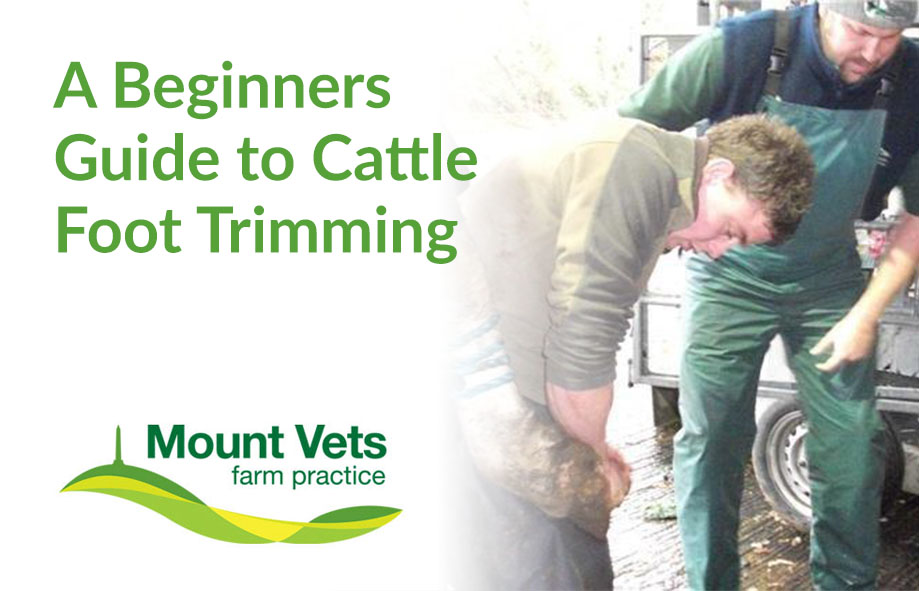
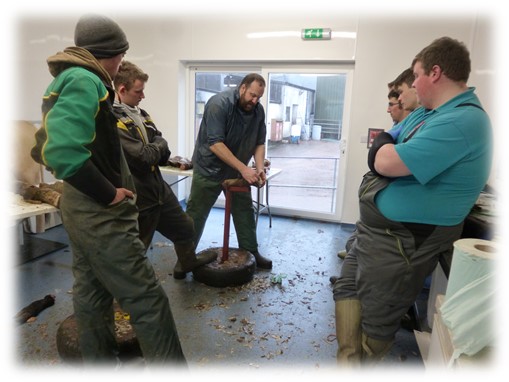
FOOT TRIMMING
7th March 2023 | 10:30am-4pm
Are you a young dairy farmer or dairy farm worker that is keen to learn how to carry out routine foot trimming on your farm?
If so, this course is for you!
The day aims to teach the Dutch 5 step technique, which is used all round the world. This course will teach you the rudimentary techniques as well as allow you to practice on several feet on the day. You will also learn more about the overall control of lameness within the herd.
The course covers:
☑️ Foot anatomy
☑️ The 5-step technique
☑️ Hands on foot trimming
☑️ Infectious and non-infectious lameness
☑️ Locomotion scoring
☑️ Bandaging and blocking feet
Course fees:
£25 if YFC age (with funding from Laura Persey Trust)
£100 for over YFC as an unsubsidised fee.
Please ring the practice to book your place on any of our courses on 01823 662286 or email farm@mountvets.com
Have a question about any of the topics covered in this newsletter?
If you need any assistance with the topics covered in this newsletter, please do not hesitate to get in touch with our experienced farm vets who will be able to help. Call 01823 662286, or contact us here.
